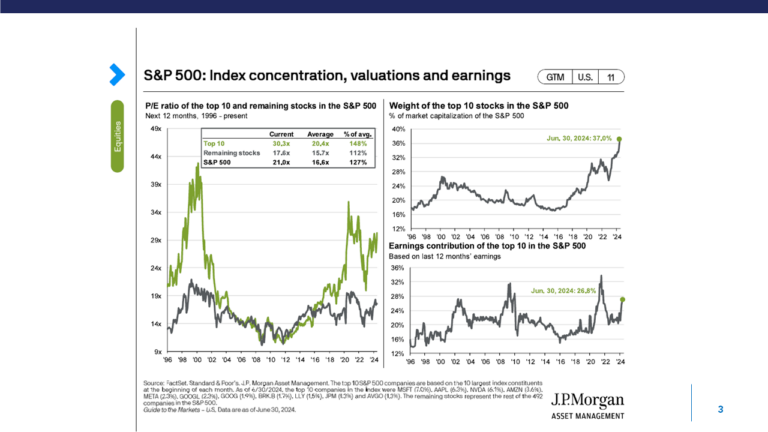Often, the average investor approaching retirement assumes they will convert their nest egg to a more conservative portfolio and then “live off the interest.” It’s an attractive concept because it’s simple and it makes us feel safer. But is it really so? Simpler, yes; but not necessarily safer. If you broaden your lens and consider that the greater risk in retirement is the effect of thirty-plus years of inflation, the answer is clearly no.
To create cash flow from just interest, an investor would probably have a portfolio filled with fixed income investments (CDs, bonds, REITs and high dividend stocks). Over thirty years, this portfolio would be more vulnerable to the loss of purchasing power (inflation) when compared to a more broadly diversified allocation that is managed for total return. Even modest inflation rates can decimate a portfolio’s purchasing power over this length of time. And, retirees are exposed disproportionately to the rising cost of medical care, which is anything but modest.
So, is there a more efficient strategy that will stretch the income-producing capacity of your retirement nest egg? Can you manage the portfolio for total return while mitigating your exposure to market volatility? We think so, but it’s not one thing; it’s an integrated series of strategies employed in concert, over your entire retirement life cycle.
If looking for a clever analogy, think of it as playing chess on three different levels simultaneously (Star Trek fans will remember). Here are the three levels.

- Investment Portfolio Asset Allocation – managing your portfolio for total return and mitigating risk via diversification.
- Timing of taxable income – taking advantage of low-tax years between your retirement date and age 70.5, by utilizing ROTH conversions.
- Tax diversification– spreading your investments across all four tax buckets.
We have been helping individuals since 1979 in successfully managing their retirement income to support the lifestyle they intend in all market and economic conditions. Here is a big picture summary of our tax-optimized retirement income methods organized around these three levels:
Investment Portfolio Asset Allocation:
On this level, we design an investment portfolio model that matches your risk profile and has the potential to produce the desired total return to outpace inflation.
- Diversify investments across all asset classes (stocks, bonds and cash) with periodic re-balancing.
- All dividends go to cash first to create the liquidity needed for regular withdrawals.
- In a low-interest rate environment where dividends aren’t sufficient, we actively raise cash periodically. We aim to raise four months’ worth of expected withdrawals at each portfolio review.
- We sell investment holdings strategically based on what is happening in the markets. If stocks are up, we sell stocks. Even deeper, within our stock allocation we will sell from the stock category that is most overweight. For 2019, that would be large US stocks and REITs.
- Contrarily, if stocks are down, we sell from bonds, which are probably overweight. This disciplined process removes the perils of behavioral investment mistakes, takes advantage of volatility (both up and down) and mitigates portfolio risk over the long run (selling the best performing and thus overweight positions to raise cash keeps the portfolio from becoming riskier over time).
Timing of taxable income:
On this level, we will intentionally take needed income from sources that are not taxable during the retirement years prior to age 70.5. In a perfect world, we could take all our needed income each year and still be in either the 0%, 10%, or 12% tax brackets. Age 70.5 is the cut off because, thereafter, we will be forced by tax regulations to take income from pretax retirement accounts (IRAs, 403bs and 401k plans) and the ability to control our tax brackets is greatly reduced. Most of our clients will then find themselves in the 22-35% tax brackets.
Each year, we can determine the optimal amount of our pretax retirement accounts to convert to a tax free ROTH IRA. These conversions are taxable but we will use them to intentionally fill up the lower tax brackets instead of taking the distributions after age 70.5 and paying a higher marginal tax rate.
Here are the steps that make up the broader strategy:
- Defer electing Social Security to age 70. This maximizes the Social Security benefit in addition to deferring taxable income.
- Take distributions needed for income from after-tax, tax-free, and HSA sources. Care will be required to manage capital gains taxes effectively.
- Convert calculated amounts from pretax IRAs to Roth IRAs to “fill up” low tax brackets.
- Defer taking extra distributions from pretax retirement accounts until required to at age 70.5.
Tax Diversification:
The tax timing strategy above only makes sense if there are tax free or tax advantaged sources of income available during the early years of retirement. We might call these sources “tax buckets” and a good strategy will diversify your investment portfolio across all the buckets.
- Pretax bucket:
Comprised of retirement accounts such as IRAs and employer sponsored plans like 401k and 403b. The contributions have never been taxed and the IRS will require distributions starting at age 70.5 under normal circumstances. All distributions will be taxed as ordinary income (the highest tax rate). - Tax-free bucket:
Comprised of ROTH retirement accounts. While contributions were made after tax, all growth and distributions will be tax free (beware of the 5-year rule). - Health savings accounts (HSAs):
The investment element of a high deductible health insurance arrangement. By maximizing the contribution, investing aggressively for the long term, and paying out of pocket medical expenses from other sources during the working years, an astute individual may accumulate a sizable account balance. The contributions are pretax, but the growth and the distributions in retirement are tax-free if used for qualified medical expenses. - After tax savings and brokerage accounts:
Taxes have already been paid on these funds but the growth or interest is taxable. Growth from long term capital gains and qualified dividends are tax advantaged (taxed at a lower rate than ordinary income). Interest from municipal bond holdings are tax free. - Tax location optimization:
Locate the investments with the highest potential for return within the tax buckets with the best tax treatment; stocks to tax free and after tax accounts first. - Tax loss harvesting
Where possible in the after-tax accounts.
Generally, pretax accounts tend to be larger because high income individuals fill them up first (sometimes exclusively) during their working years. An effective tax optimized strategy, especially during the high income pre-retirement years, will intentionally diversify an investment portfolio across all buckets.
Winfred Jacob, CFP®
Senior Financial Advisor


